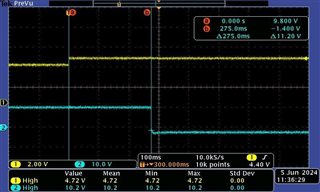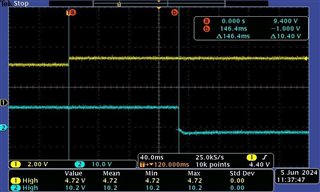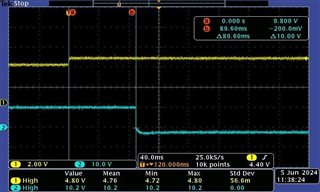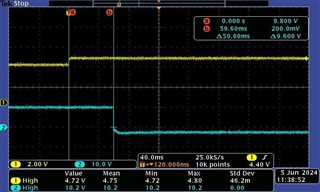Tool/software:
Hello Sir:
We need your explanation on COV and CUV delay time.
If conversion-time setting is 2.93ms, and cell overrvoltage protection delay setting is 10 ADSCAN intervals. (balancing configuration is 01)
And out verified results is around 270ms, it's not meet our understand, we think which should be within 29.3ms. (ch1 is VC1, ch2 is VCHG(pin10))

If conversion-time setting is 1.46ms, and cell overvoltage protection delay setting is 10 ADSCAN intervals. (balancing configuration is 01)
And out verified results is around 140ms, it's not meet our understand, we think which should be within 14.6ms. (ch1 is VC1, ch2 is VCHG(pin10))

If conversion-time setting is 732us, and cell overvoltage protection delay setting is 10 ADSCAN intervals. (balancing configuration is 01)
And out verified results is around 90ms, it's not meet our understand, we think which should be within 7.3ms. (ch1 is VC1, ch2 is VCHG(pin10))

If conversion-time setting is 366us, and cell overvoltage protection delay setting is 10 ADSCAN intervals. (balancing configuration is 01)
And out verified results is around 60ms, it's not meet our understand, we think which should be within 3.6ms. (ch1 is VC1, ch2 is VCHG(pin10) )

Would you please provide explanation on it? and let us how to calculate the delay time.
Looking forward your feedback.
Thanks a lot.

